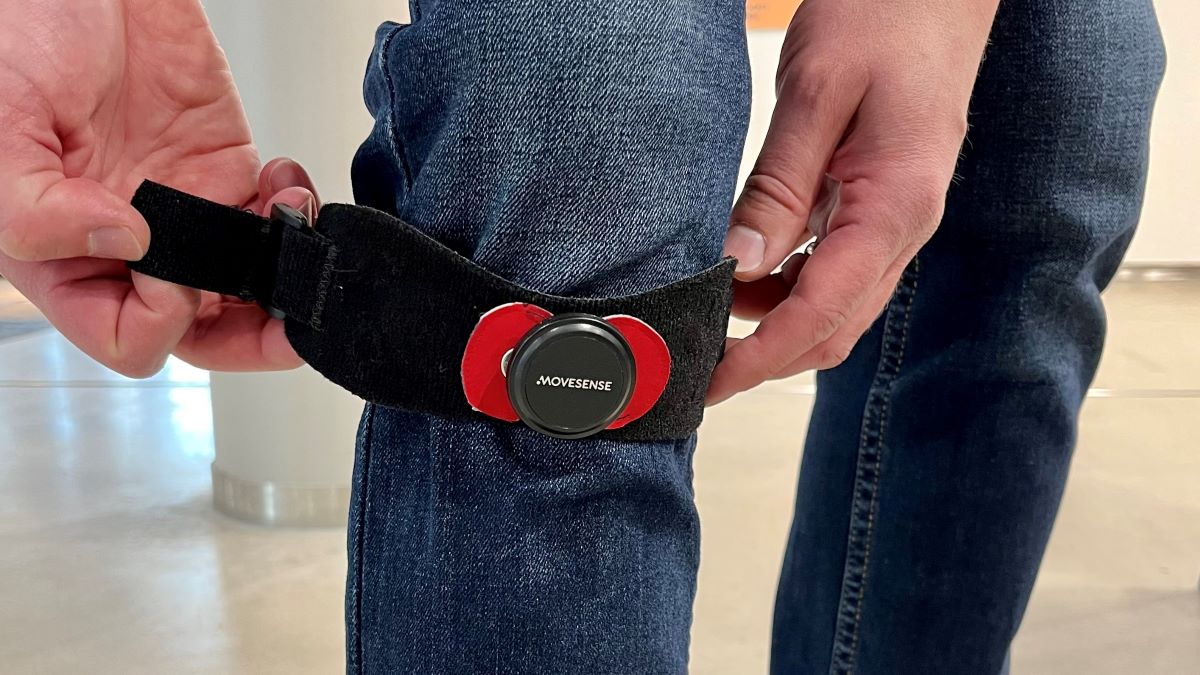Movesense Sensors in Education – Students Innovate New Applications

Several educational institutions have discovered the advantages of Movesense sensors in educational use. The programmable, easy-to-use and affordable sensor is a great tool for teaching wearable technology, embedded programming and especially health technology.
Universities like Carnegie Mellon University in California, USA, Helsinki University of Applied Sciences in Finland and KTH Royal Institute of Technology in Stockholm, Sweden, are using Movesense sensors in their regular course program.
We interviewed some students and lecturers who have used the sensors in during the spring semester 2023 and present their projects. Hopefully these examples will inspire new schools and universities to start using Movesense in education.
User-centric Concept Development at Carnegie Mellon
Professor Cynthia Kuo at Carnegie Mellon University has been using Movesense sensors already in several classes, the latest during the spring 2023.
— The focus of the class was to define an actual problem that users have and the Movesense sensors can be used to solve in a concrete, actionable manner. The students assessed and refined their problem statements by conducting expert interviews and gathering preliminary data with the sensors. This illustrates the process behind creating user-centered applications. Movesense provides a platform to experiment with ideas, Kuo says.
— Most students entered the course with no experience using IMU data. In order to understand how IMUs work, they conducted some experiments with the sensors and wrote some code on the Movesense. For example, one assignment was to recognize the different phases of the gait cycle, and another assignment was to model time series data from toothbrushing, Kuo explains.
One of the projects was Anagha Ravi Shankara‘s LungePro, an application to help beginners learn how to perform lunges properly.
— The project is about analyzing the lunge posture. This was one of the problems that I was facing as a beginner in the gym when I was new to lunges. The solution counts the reps and sets of lunges. It increases the count only when the user’s posture is correct when lunging. In this way, the user gets an insight into whether he/she is maintaining the posture correctly, Shankara tells.
— Using the Movesense sensor, I can measure the linear acceleration to count the reps, and the gyroscope would help me measure the angle at which the user is bending their knee, which in turn helps me analyze the posture. Once I got familiar with the coding environment and how to dump the code into the sensor, other things were pretty intuitive. It was fun to play around with the sensor and discover how many projects could be deployed using this sensor, she says.
Fu Tan developed his idea from being a coffee lover.
— I enjoy brewing coffee. Therefore, I purchased a coffee machine, trying to learn how to make a latte/cappuccino with latte art. However, I found out that doing latte art is a lot more difficult than it looks. I practice a lot, but still couldn’t be able to perform perfectly. Then, I found out that there are robot arms that can perform the latte art pattern. This led me to generate this project idea. My thought was: “Why don’t we try to record the data by the baristas wearing Movesense sensors and then use that as a gold standard? Then I can compare the difference in my movements, and I can improve myself by knowing the feedback.”
Health Tech Education in Metropolia Helsinki
Helsinki University of Applied Sciences Metropolia uses Movesense sensors in teaching health technology. This spring, Movesense sensors were used in innovation projects that the next students will inherit from the previous ones, with the aim to bring the solutions to actual use at some point.
In a project called “Detection of Central Sleep Apnea with the Movesense Sensor”, Ada Salminen, Mikael Gustafsson, Nea Iso-Kuusela, Suvi Laakkonen and Vera Moisio developed a working prototype of a mobile application that uses Movesense sensors to monitor breathing patterns during sleep. The application tells the user if breathing interruptions have been observed during sleep, how often, and an indicative assessment of whether there is reason to suspect central sleep apnea.
Also this project included several expert interviews and user studies, but also user interface design, algorithm development and programming. The multidisciplinary team included students of wellness and health technology, media technology and midwifery.
Another Metropolia project worked on preventing knee osteoarthritis. The team Aseel Hameed, Niini Saarenmaa, Oskari Korpela, Roni Heininen and Riikka Santalahti developed an application called MOA (Movesense OsteoArthritis). It uses a sensor attached with an orthopedic band (see featured image) under the knee joint to monitor the gait of the user. The MOA app analyzes the lateral movement of the knee and identifies gait characteristics that predispose the user to osteoarthritis.
The students defined the application’s target group as patients in the rehabilitation phase after knee surgery. With the MOA application, they can get feedback of their gait and find out about possible misalignments in their walking.
If your university is interested in using practical. programmable heart rate, ECG and movement sensors in education, don’t hesitate to ask more from the Movesense team. You can also order devices directly from our web shop.
Views: 136
